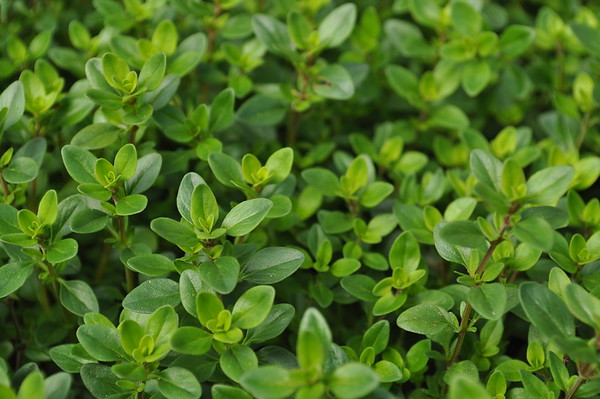
English Tabor thyme
Habit:
Ecological Role:
Availability:
English Tabor thyme has wide leaves that are the most broad, green, and juicy of any thyme we've grown. Whereas other varieties are often quite spicy and pungent, this thyme is mild tasting but still has the herbal aromatic qualities that all thyme varieties share. Although all thyme varieties like sun and well-drained soil, this one is relatively tolerant of part shade and moist soil. Remind you of England?
Who couldn't use more thyme in their day? The foliage and flowers make tea that not only tastes great, but also has all of the healing properties of thyme oil: antibacterial, carminative, soothing on the stomach, and eases congestion in the sinuses and lungs. Thyme thrives especially when you pinch the growing tips to make it more shrubby and branched so that it can form a miniature hedge. It grows best with nearly full sun, though some varieties can tolerate some shade. Although rich soil is best, thyme will also grow in poor soil as long as it has good drainage.
After 3-4 years, the lower stems of thyme plants can often get very woody and the whole plant will grow more slowly unless it's in full sun with rich moist soil. If your plant is woody and not growing very quickly, you might try burying the lower stems with a nice rich compost so that the upper shoots stick out of the top. The upper stems will send out new roots into the fluffy and fertile layer of compost, reinvigorating the plant.
